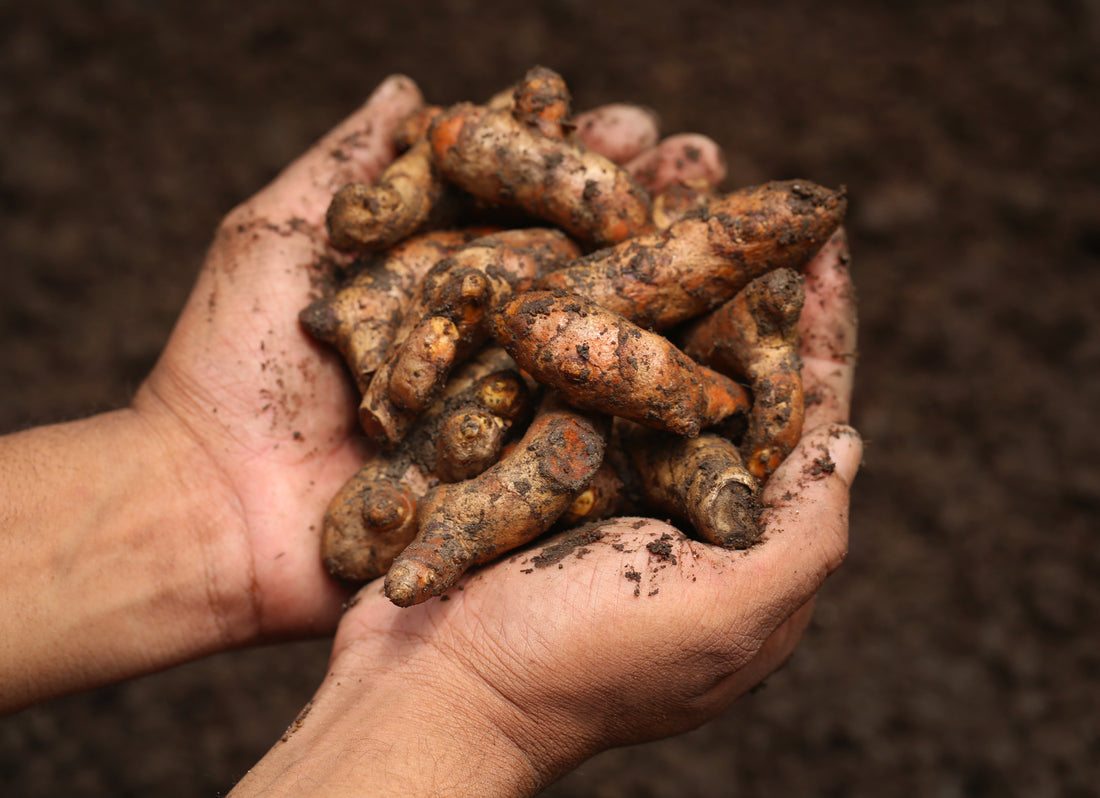Turmeric cultivation in India is a good business. Turmeric production in India is about 78% of total production in the world. Turmeric can be grown as a mono-crop or with other plantation crops as an intercrop. Discover how to grow turmeric in India. Here is the complete information on turmeric plant, seed, and production.
Turmeric, known as Haldi in Hindi, is a popular and sacred spice from India. It is called 'Indian Solid Gold' and 'Indian Saffron' owing to its golden yellow colour. It has profound significance as a condiment, dyeing agent, flavouring agent, and even as a medicine. It is an inseparable ingredient in Asian cuisine, especially in Indian curry preparations. A by-product of turmeric is 'kumkum' or the sacred vermilion. It has a place of importance in many Hindu religious ceremonies, offerings, and festivals. Owing to the increasing demand for pure, organic food products, turmeric is an important food colouring agent.
Scientific Information on turmeric plant:
Botanically called Curcuma longa, turmeric belongs to the Zingiberaceae family- the same family as ginger. It is the rhizome or the root that is used for various purposes mentioned above. The turmeric plant grows from the rhizome and the leaves are broad, long, and bright green. The plant does not have a well-defined stem. It is a pseudostem that is shorter than the leaves. The flowers are pale yellow and are borne on spikes.
Generally, turmeric is ready for harvesting within 7-9 months. Typically, it is ready when the leaves turn yellow.
Ideal Conditions for Turmeric Cultivation in India
Climate
Turmeric needs a warm, humid climate for growth. It grows in hilly areas at an altitude of 1500m from sea level. The ideal temperature ranges between 20-30 ⁰C and the rainfall needed are 1500 to 2250 mm per annum for turmeric cultivation in India. It can also be grown as an irrigated crop.
Soil

Clayey soil with a large amount of humus is best for growing turmeric. It can however also grow in sandy, well-drained soil. Other types of soil that are suitable for turmeric cultivation are red soil, ashy loam, or light black soil. In other words, any type of loamy soil, with a natural drainage system is good for turmeric plantation. The water must drain off and not stagnate at the place. In addition, the soil acidity must be neutral. Alkaline or acidic soil would harm the rhizome of the turmeric plant and it cannot grow.
Crop Rotation
If turmeric is being grown organically then it must be rotated with other organically grown crops. Using inorganic or synthetic fertilizers would affect the soil quality and the harvest thus produced would not be organic. Commercially, crops like sugarcane, garlic, onion, pulses, yam (elephant foot), wheat, maize, ragi, and some other quickly growing vegetables are rotated with turmeric. It is also cultivated as a subsidiary crop to ginger and chilli.
Land Preparation for Turmeric Farming

While preparing the land for turmeric farming and cultivation, beds must be prepared with 15 cm as height and 1m as the width. The length can be as per convenience. When sowing the rhizomes or turmeric seeds, there should be a space of 10 cm between the two rhizomes. The beds must be 50 cm apart from each other.
If the crops are to be irrigated, ridges and furrows must be prepared for turmeric cultivation. The rhizomes are planted in the shallow ridges.
Solarisation
Solarisation is the use of the sun for checking the growth of pests and weeds using solar power. Solarizing the beds before turmeric cultivation can keep the disease-causing organisms under check.
......................Stay tuned and follow our page to know the further best farming techniques in the upcoming Turmeric cultivation phase.....

